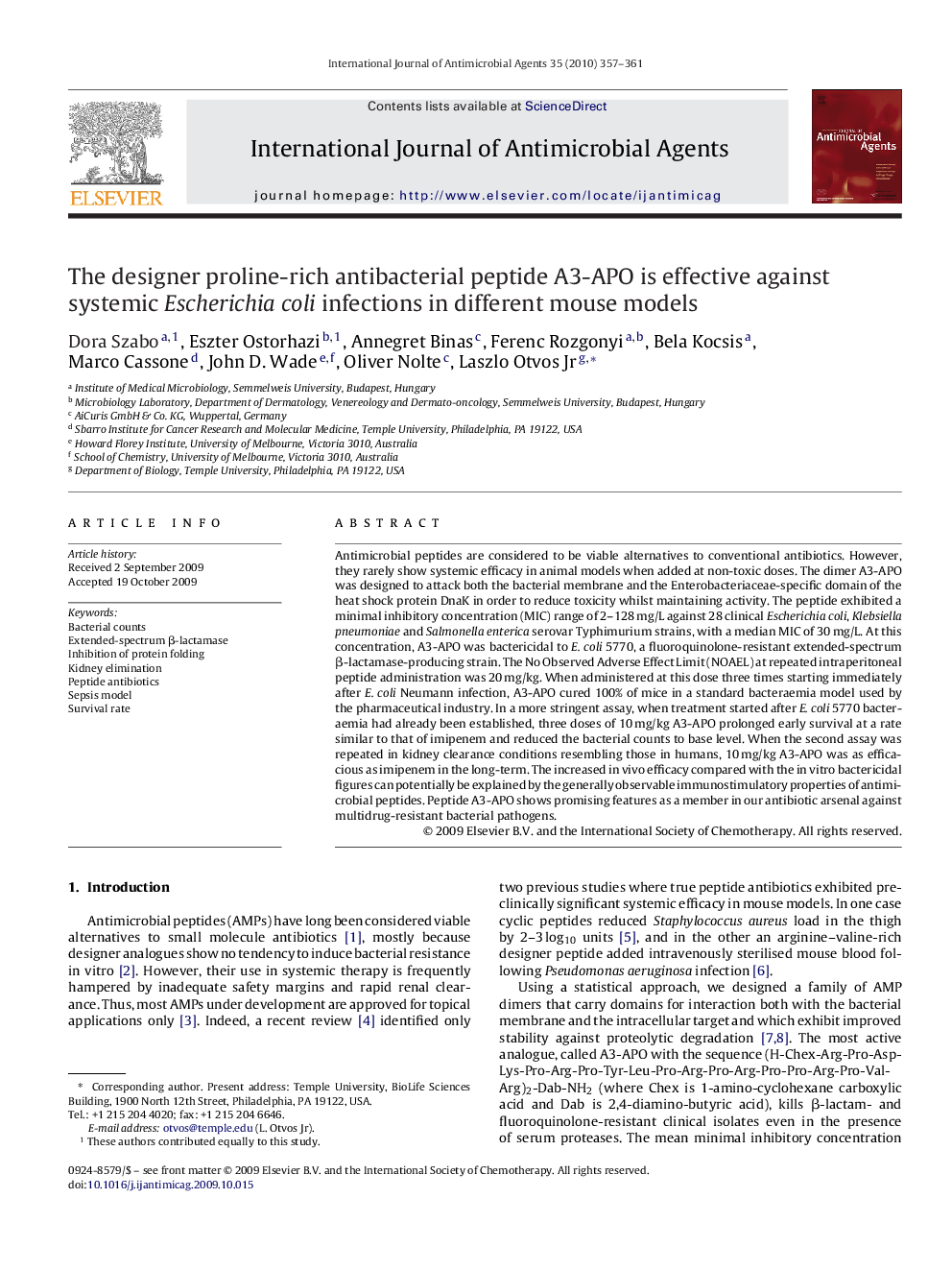| Article ID | Journal | Published Year | Pages | File Type |
|---|---|---|---|---|
| 3359608 | International Journal of Antimicrobial Agents | 2010 | 5 Pages |
Antimicrobial peptides are considered to be viable alternatives to conventional antibiotics. However, they rarely show systemic efficacy in animal models when added at non-toxic doses. The dimer A3-APO was designed to attack both the bacterial membrane and the Enterobacteriaceae-specific domain of the heat shock protein DnaK in order to reduce toxicity whilst maintaining activity. The peptide exhibited a minimal inhibitory concentration (MIC) range of 2–128 mg/L against 28 clinical Escherichia coli, Klebsiella pneumoniae and Salmonella enterica serovar Typhimurium strains, with a median MIC of 30 mg/L. At this concentration, A3-APO was bactericidal to E. coli 5770, a fluoroquinolone-resistant extended-spectrum β-lactamase-producing strain. The No Observed Adverse Effect Limit (NOAEL) at repeated intraperitoneal peptide administration was 20 mg/kg. When administered at this dose three times starting immediately after E. coli Neumann infection, A3-APO cured 100% of mice in a standard bacteraemia model used by the pharmaceutical industry. In a more stringent assay, when treatment started after E. coli 5770 bacteraemia had already been established, three doses of 10 mg/kg A3-APO prolonged early survival at a rate similar to that of imipenem and reduced the bacterial counts to base level. When the second assay was repeated in kidney clearance conditions resembling those in humans, 10 mg/kg A3-APO was as efficacious as imipenem in the long-term. The increased in vivo efficacy compared with the in vitro bactericidal figures can potentially be explained by the generally observable immunostimulatory properties of antimicrobial peptides. Peptide A3-APO shows promising features as a member in our antibiotic arsenal against multidrug-resistant bacterial pathogens.
